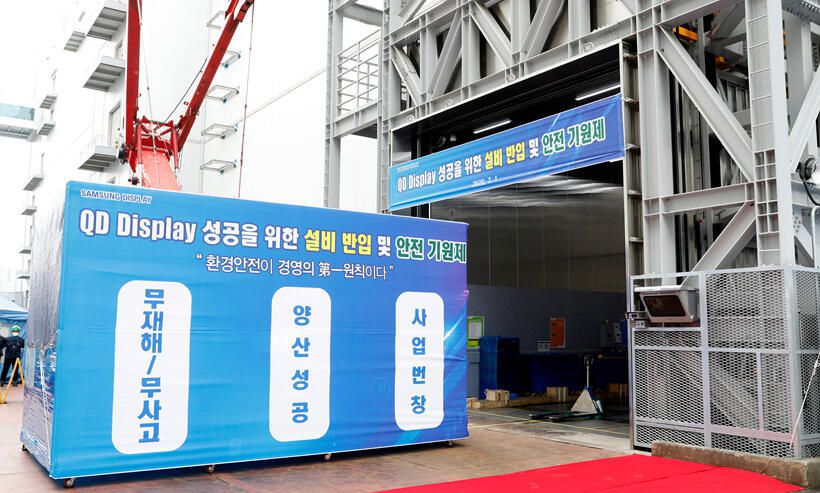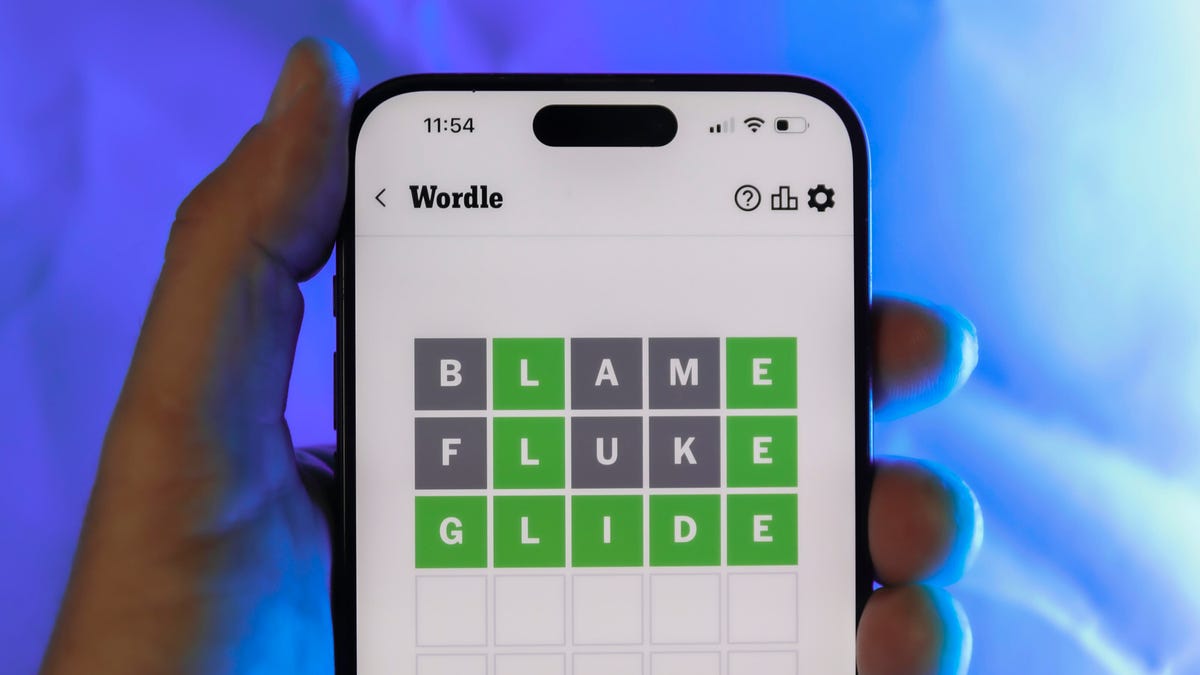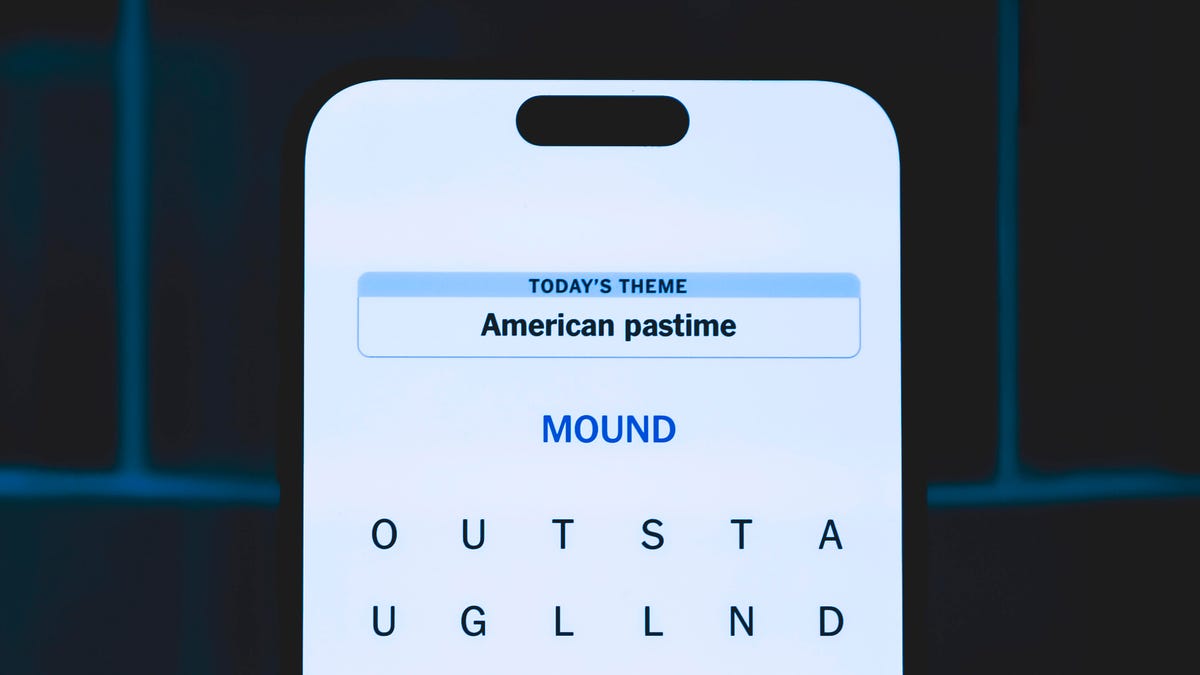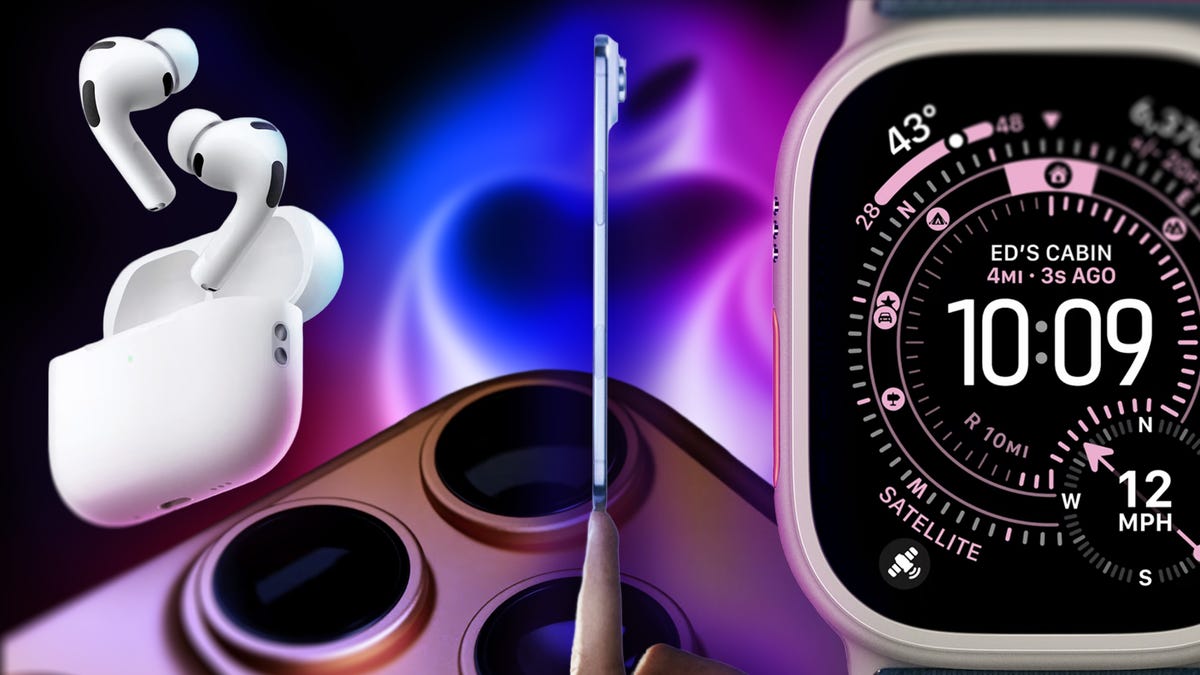Technologies
Samsung’s QD-OLED TV might be here very soon. Here’s everything we know
Samsung’s rumored OLED TV with quantum dots could be coming as soon as 2022, and the new technology is set to challenge the best from rival LG.

Most people have two options when it comes to TV technology: LCD and OLED. Sure, some people also have the choice of a MicroLED TV, but those can be pricey. Samsung, the biggest TV-maker in the world, has been planted in the LCD camp for many years, while its rival LG is the biggest name in OLED. Despite advancements like QLED, mini-LED and dual panels, LCD has always lagged behind OLED in overall picture quality.
Now Samsung is working on a new kind of TV that aims to combine two display technologies into something greater. It’s a hybrid between OLED and quantum dots called QD Display. Samsung Display will end production of LCD panels by the end of 2021, moving to QD Display next year, according to a February report from Korea IT News. At the same time, Samsung Electronics could start selling these new TVs as early as 2022.
Read more: When is the best time to buy a new TV? Is it Black Friday?
Here’s what we’ve heard about Samsung’s new display technology so far. If you’re looking to spruce up your current TV in the meantime, check out how to get rid of your TV’s muffled dialogue, nine picture settings you should change and the best picture mode for your TV. And believe it or not, your TV’s sharpness controls should be turned down, not up.
Samsung’s $11 billion bet on quantum dots
Samsung has been selling LCD TVs enhanced by quantum dots for the last few years under its QLED brand, but its last (and only) OLED TV was a one-off that it stopped selling almost a decade ago. In October 2019, Samsung Display announced it was building a factory to make TVs that combined these technologies:
Samsung Display will invest 13.1 trillion won by 2025 to build «Q1 Line,» the world’s first QD display mass production line at Asan Campus. The new line is scheduled to start production in 2021 with an initial 30,000 sheets (8.5 generations) and will produce a huge QD display of 65 inches or larger.
That’s an investment of around $11.1 billion. While the company calls this «QD display,» it isn’t electroluminescent, aka «direct view» quantum dots. That technology is still several years away. This is going to be a QD-OLED hybrid.
At the announcement, South Korean President Moon Jae-in also referenced Samsung’s rival LG in regards to Korea’s place in world TV production: «It is important to maintain the top spot of the global display market with game-changing technologies,» Moon said. «Following LG Display’s 3 trillion-won investment in large OLED panel production in July, Samsung Display’s latest investment plan brightens prospects further.»
One thing you might have noticed is that Samsung is calling this «QD display,» which can be confusing since this isn’t direct-view quantum dots (more on these later). Since LG has spent years being the only name in town (figuratively and literally) for OLED, it’s unlikely Samsung will call any version of this technology OLED. We’ll probably have to wait until CES 2022 to find out how it brands the new TV.
What is QD-OLED and how will it work?
So how will it work? Nanosys, a company that makes quantum dots, has shared some details. Its CEO, Jason Hartlove, is understandably bullish on the technology, which relies on converting light from an OLED panel:
«Quantum Dot Color Conversion is a completely new way of rendering color in displays,» he told CNET. «The result is pure quantum dot color with much higher efficiency as no light is lost in a color filter.»
Combining quantum dots and OLED plays to the strengths of both technologies. The idea with any TV is to create red, green and blue light. LED LCDs with quantum dots, like Samsung’s current QLED TVs, use blue LEDs and a layer of quantum dots to convert some of that blue into red and green. With the current version of OLED, yellow and blue OLED materials create «white» light. In both cases, color filters let pass only what color is needed for that specific subpixel.
The idea with a QD-OLED is to simplify these designs into one, by using OLED to create blue light, and then a quantum dot layer to convert some of the blue into red and green.
Read more: How quantum dots could challenge OLED for best TV picture
There are many advantages to this method, in theory. By using only one color or material of OLED, the manufacturing costs go way down since it’s easier to build. LG, for instance, uses only two OLED materials, blue and yellow, for every pixel across the entire display. Light-blockingcolor filters create the green and red. QDs have nearly 100% efficiency, significantly better than filters, so in theory the hybrid TVs will be much brighter. Plus, there’s the possibility of even wider color gamuts at all brightness levels.
Because each pixel can be shut off, these hybrid TVs will also have the incredible contrast ratios that OLED is known for.
Since blue OLED materials still age faster than red and green, having the entire panel one color means the TV ages more evenly with no color shift. Keeping that aging to a minimum, and thereby having a TV that doesn’t seem dim after a few years, is one of the key manufacturing issues. This is especially true in this HDR era of extreme brightness levels.
While this new Samsung plant is focusing on TV-size displays, the technology could work in phone-sized displays as well. Since Samsung doesn’t seem to have any issue making excellent small OLEDs, I’d be surprised if it’s in any rush to upset that market with something as advanced as this. Also, Samsung’s phone-sized OLEDs use red, green and blue OLEDs compared to LG’s blue-yellow. Samsung tried to make RGB OLED TVs and just couldn’t make them profitable. What’s more likely, and mentioned in the latest rumors, is they’ll use this tech to build ultra-high resolution 8K computer monitors along with larger TV screens.
As mentioned earlier, it’s clear Samsung believes strongly in this technology, since it’s ending production of LCDs at its factories in Korea. This doesn’t mean that starting next year it won’t sell any LCDs. Samsung is a massive company, and the part of the company that makes LCDs, Samsung Display, is stopping production. The part of the company that sells TVs, Samsung Electronics, has made no such announcement. In fact, part of the most recent delay was Samsung Electronics needing LCD panels before they were ready to start selling QD-OLED panels. They’ve worked that out for 2021, and most likely going forward they’ll source their LCD panels from a third party.
Into the future: Direct-view quantum dots, ELQD and more
QD-OLED seems to be right around the corner. But what about even farther-future display tech? Well, the quantum dot folks seem to think direct-view quantum dot displays are just a few years off. These electroluminescent quantum dots, or ELQD, would have all the benefits of OLED, all the benefits of QD and none of the issues of LCD or the wear and longevity concerns of OLED. A very promising tech indeed.
The other new TV tech that’s already arriving on the market, the extreme high-end of the market anyway, is MicroLED. It has many of the same benefits as the QD-OLED hybrid, but doesn’t muck around with those pesky organics. Affordable versions of that are still some distance off. Oh, and MicroLEDs use quantum dots too. They’re a fascinating technology with uses far beyond TV screens.
In the meantime, we’ve got mini-LED, which is pretty cool too and far less expensive than any of these.
As well as covering TV and other display tech, Geoff does photo tours of cool museums and locations around the world, including nuclear submarines, massive aircraft carriers, medieval castles, airplane graveyards and more.
You can follow his exploits on Instagram and YouTube, and on his travel blog, BaldNomad. He also wrote a bestselling sci-fi novel about city-sized submarines, along with a sequel.
Technologies
Today’s Wordle Hints, Answer and Help for Sept. 11, #1545
Here are hints and the answer for today’s Wordle for Sept. 11, No. 1,545.

Looking for the most recent Wordle answer? Click here for today’s Wordle hints, as well as our daily answers and hints for The New York Times Mini Crossword, Connections, Connections: Sports Edition and Strands puzzles.
Today’s Wordle puzzle was an easy one for me, for a change! If you need a new starter word, check out our list of which letters show up the most in English words. If you need hints and the answer, read on.
Today’s Wordle hints
Before we show you today’s Wordle answer, we’ll give you some hints. If you don’t want a spoiler, look away now.
Wordle hint No. 1: Repeats
Today’s Wordle answer has no repeated letters.
Wordle hint No. 2: Vowels
Today’s Wordle answer has two vowels.
Wordle hint No. 3: First letter
Today’s Wordle answer begins with C.
Wordle hint No. 4: For your house
Today’s Wordle answer refers to a piece of furniture.
Wordle hint No. 5: Meaning
Today’s Wordle answer can refer to where you might sit at your kitchen table.
TODAY’S WORDLE ANSWER
Today’s Wordle answer is CHAIR.
Yesterday’s Wordle answer
Yesterday’s Wordle answer, Sept. 10, No. 1544 was POUTY.
Recent Wordle answers
Sept. 6, No. 1540: BULGE
Sept. 7, No. 1541: TENOR
Sept. 8, No. 1542: CHIRP
Sept. 9, No. 1543: TRICK
Technologies
Today’s NYT Strands Hints, Answers and Help for Sept. 11
Here are hints and answers for the NYT Strands puzzle for Sept. 11

Looking for the most recent Strands answer? Click here for our daily Strands hints, as well as our daily answers and hints for The New York Times Mini Crossword, Wordle, Connections and Connections: Sports Edition puzzles.
Today’s NYT Strands puzzle took me a while. The answers are numerous and tough to unscramble, I thought. If you need hints and answers, read on.
I go into depth about the rules for Strands in this story.
If you’re looking for today’s Wordle, Connections and Mini Crossword answers, you can visit CNET’s NYT puzzle hints page.
Read more: NYT Connections Turns 1: These Are the 5 Toughest Puzzles So Far
Hint for today’s Strands puzzle
Today’s Strands theme is: Take a break
If that doesn’t help you, here’s a clue: Relax.
Clue words to unlock in-game hints
Your goal is to find hidden words that fit the puzzle’s theme. If you’re stuck, find any words you can. Every time you find three words of four letters or more, Strands will reveal one of the theme words. These are the words I used to get those hints but any words of four or more letters that you find will work:
- STEER, SHOW, CREE, STEM, METS, MICE, SHADE, DIME, TREE, STREET, DARE, DARES, PAIN, MITE
Answers for today’s Strands puzzle
These are the answers that tie into the theme. The goal of the puzzle is to find them all, including the spangram, a theme word that reaches from one side of the puzzle to the other. When you have all of them (I originally thought there were always eight but learned that the number can vary), every letter on the board will be used. Here are the nonspangram answers:
- READ, REST, PAINT, SHOWER, STRETCH, EXERCISE, MEDITATE
Today’s Strands spangram
Today’s Strands spangram is METIME. To find it, look for the M that’s three letters down on the far-left row, and march straight across.
Technologies
Everything Announced at Apple Event 2025: iPhone Air, iPhone 17, AirPods Pro 3 and New Apple Watches
Apple’s annual September reveal of its latest mobile devices featured the brand new iPhone Air, AirPods Pro 3 with heart-rate sensing, the iPhone 17 lineup and new Apple Watches.

Each September, Apple’s product release playbook dials up the unveiling of the company’s newest line of iPhones, along with a variety of complementary gadgets. On Tuesday, the company took the wraps off the iPhone 17 in all its variations, most notably the new skinny iPhone Air, along with new Apple Watches — Series 11 and Ultra 3 — and an upgrade to its 2-year-old AirPods Pro 2 earbuds.
Along with the hardware, Apple is rolling out the new versions of the devices’ respective operating systems, iOS 26 and WatchOS 26, both of which have been in public beta all summer. (The final version of iOS 26 will be available on Monday, Sept. 15.) The new Liquid Glass interface design may even seem routine to you by now.
Many of the new devices’ capabilities come from new features in their operating systems, and throughout Apple stressed health and fitness as one of the primary drivers. It deemphasized how many of the features’ analysis capabilities — notably most of the new heart-rate sensing and Live Translation in the AirPods Pro 3 — really rely on the iPhone for their heavy lifting.
Given Apple’s struggles with its AI efforts, especially given how much it stressed Apple Intelligence at previous events, the company came as close to downplaying it as it could: There was only the occasional mention of features being driven by AI and the increased neural power in the new A19 Pro processor. And despite no discussion of smart home tech, there was a brief hint in the iPhone Air announcement.
For more in-the-moment commentary, check out ourApple Event live blog.
Don’t miss any of our unbiased tech content and lab-based reviews. Add CNET as a preferred Google source.
iPhone 17 boasts a better screen
The update to Apple’s most mainstream model comes in pastel colors. Notably, the base iPhone 17 now has a ProMotion (120Hz VRR) display, which was formerly only on the Pro models. The screen is larger (6.3 inches) and brighter (up to 3,000 nits) with an improved scratch- and glare-resistant coating. ProMotion has been a much-wanted upgrade; I think there’s probably some dancing going on right now. Inside, it incorporates the A19 chip with a five-core GPU and adds fast charging.
The new front camera has an 18-megapixel square sensor for more flexibility in framing, alongside a larger field of view to enable Center Stage and stabilization. It still has two cameras, though the main camera is bumped to 48 megapixels via Dual Fusion or 24 megapixels as standard.
It starts at $799 in the US — the 16E remains in the line at $599 — and all the iPhones are available for preorder now. It’s £799 in the UK and AU$1,399 in Australia.
The iPhone Air is thin but powerful
Thin seems to be in for phones this year — at least for manufacturers, since buyers don’t seem to be quite as interested and iPhone buyers even less so. Did anyone ask for a super thin iPhone? But in the continuing absence of a foldable iPhone model, what’s a company to do? Behold the iPhone Air, at 5.6mm thick.
It has a polished titanium frame and Ceramic Shield on both sides, which makes some people just want to touch it. According to the company, it’s almost entirely battery on the inside, with Apple claiming all-day battery life.
It’s got high-end specs, too: a 6.5-inch ProMotion XDR display and the A19 Pro processor found in the Pro models. The processor incorporates neural accelerators into each GPU core (six of them), bigger caches and more, giving it quite a bit of computing power.
A new N1 chip and C2 modem improve connectivity (Wi-Fi 7, Bluetooth 6) and power conservation. The device has 48-megapixel Fusion and 12-megapixel wide-angle cameras, the Center Stage front camera, and a way to combine front and back cameras live.
It requires all-new accessories, including a MagSafe pack (80 hours) and a thin, translucent case. It starts at $999 (£999, AU$1,799).
iPhone 17 Pro and Pro Max deliver a love letter to videographers
The flagship iPhone Pro models tend to differ only by screen size (now 6.3 and 6.9 inches), and their unique features are made possible by their higher-powered processors, more flexible camera arrays and other component differences over the lower-end models.
Like the Air, the iPhone 17 Pro uses an A19 Pro processor with updated cooling and thermal management — a vapor chamber — and has a Ceramic Shield back and front. Apple promises 39 hours of video playback.
The cameras are usually the highlight of the Pro, and that remains true: It has an 18-megapixel front Center Stage camera and a triple-camera Fusion Telephoto system, with three 48-megapixel cameras, including a 4x-8x telephoto for a maximum of 200mm equivalent. The phones can capture ProRes Raw and Genlock (to synchronize cameras for video), which should tickle the fancy of pro videographers.
The Pros now come in orange, which isn’t everyone’s favorite, and there’s a new 2TB storage option. They start at $1,099 (£1,099, AU$1,999).
Apple Watch Series 11, Watch SE and Watch Ultra 3 get redesigns
The Apple Watch Series 10 is our Editors’ Choice for smartwatches. The next-generation Watch Series 11 shrinks the thickness, with a more scratch-resistant front glass. It adds 5G support and better power management for up to 12 hours of battery life. A new Flow watch face takes advantage of Liquid Glass visuals. It adds blood pressure tracking (based on blood flow) to find indications of high blood pressure and sleep score from WatchOS 26. Prices start at $399 (£369, AU$679).
There are new bands in new colors, too.
It’s been three years since the last iteration of the Watch SE. Now, we get the Watch SE 3, with the new S10 chip with 5G wireless. It still delivers 18-hour battery life and an always-on display. There’s wrist temperature sensing for ovulation tracking, it gets sleep apnea tracking, sleep score and more. Prices start at $249 (£219, AU$399), and preorders start now.
Apple’s top-of-the-line smartwatch, the Ultra 3, is updated over the Watch Ultra 2 with a wide-angle OLED (smaller bezels mean more display area). Apple has given it emergency-related satellite connectivity, which required a new antenna and receiver. It also comes with increased battery life. Prices start at $799 (£749, AU$1,399).
AirPods Pro 3 upgrade includes live translation
The AirPods Pro 2 version released in 2023 offered only incremental hardware upgrades over the 2022 models (hence the lack of a name change). The AirPods Pro 3 are smaller, with an updated design that introduces foam-ish eartips for better noise isolation and upgraded active noise cancellation, live translation with adaptive ANC for better focus on the speaker, five sizes of ear tips and IP57 water resistance. Fitness enhancements include heart-rate and calorie tracking, among other updates, which come from iOS. Battery life increases to eight hours with ANC and 10 hours with transparency.
The live translation can be somewhat awkward, though, or as CNET’s Macy Meyer puts it, it’s fluent in convenience, not culture. The price hasn’t changed; they still start at $249 (£219, AU$429).
Notable new accessories for the iPhones
The iPhone Air debuts with new accessories. If you want to keep it thin and still have some level of protection, Apple is offering a $39 polycarbonate bumper that wraps around the edges. Aside from drop protection, I know I’d need it simply to keep the slight phone from slipping out of my hands. There is also a traditional $49 clear MagSafe Case along with an opaque Beats-branded polycarbonate case for $45. If for some reason you want to turn your ultrathin phone into a thicker one with longer battery life, you can pick up the $99 MagSafe battery.
The redesign of the camera section of the iPhone 17 Pro and Pro Max means it needs a new case design, and in addition to all the newly designed versions of the usual cases Apple introduced a $59 MagSafe case made of a new TechWoven material — colored yarns of recycled polyester woven into a textured material and coated with polyurethane, or PTU. Presumably, it will fare better than the FineWoven cases Apple released with the iPhone 15.
You can also get a novel (for Apple) $59 Beats Kickstand Case, which looks like the standard polycarb case. The kickstand, though, isn’t a kickstand; it’s a handstrap with a small bit on the end that you can use for standing the case on its side. The kickstand case also comes in a version for the iPhone 17.
For many of the iPhone cases Apple launched yesterday, the company introduced magnetic attachment points. That makes them compatible with its new $59 Cross-Body Strap. On one hand, I’m not sure I want to trust my $1,200 phone to some magnets or my propensity to walk into walls and doorways. On the other, it’s probably safer than my back pocket.
-

 Technologies3 года ago
Technologies3 года agoTech Companies Need to Be Held Accountable for Security, Experts Say
-

 Technologies3 года ago
Technologies3 года agoBest Handheld Game Console in 2023
-

 Technologies3 года ago
Technologies3 года agoTighten Up Your VR Game With the Best Head Straps for Quest 2
-

 Technologies4 года ago
Technologies4 года agoVerum, Wickr and Threema: next generation secured messengers
-

 Technologies4 года ago
Technologies4 года agoGoogle to require vaccinations as Silicon Valley rethinks return-to-office policies
-

 Technologies4 года ago
Technologies4 года agoBlack Friday 2021: The best deals on TVs, headphones, kitchenware, and more
-

 Technologies4 года ago
Technologies4 года agoOlivia Harlan Dekker for Verum Messenger
-

 Technologies4 года ago
Technologies4 года agoiPhone 13 event: How to watch Apple’s big announcement tomorrow
